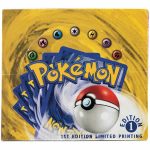
For many years now, we have been advising clients to not throw away their old VHS tapes, unless they have checked out a few sites to confirm they are not valuable.
Recently, an old VHS tape, a sealed copy of 1986 Back to The Future made a record price. The highest ever paid for a VHS tape!
Do check our blog on VHS tapes and their collection price future down our blog pages.
Kind regards
Cheryl - Oxford Duplication Centre Ltd
VHS Copy of Movie Sells for Tens of Thousands
Record price for a VHS tape. Check your old VHS collection. A sealed copy of the 1986 comedy Back to the Future was recently sold for $75,000 by Heritage Auctions. The closing price is believed to be the highest ever paid for a VHS tape. The tape came from the collection of Tom Wilson, an actor featured in the Back to the Future trilogy. The tape was still in its original shrink wrap and rated near-mint by experts. Wilson starred as Biff Tannen and other members of the Tannen family in the trilogy. Other VHS tapes (still in shrink wrap) that have gone for high prices tend to be hit movies, including Jaws, Top Gun and assorted Star Wars and Indiana Jones titles.

Photo: Heritage Auctions, HA.com









Leave a Reply
You must be logged in to post a comment.